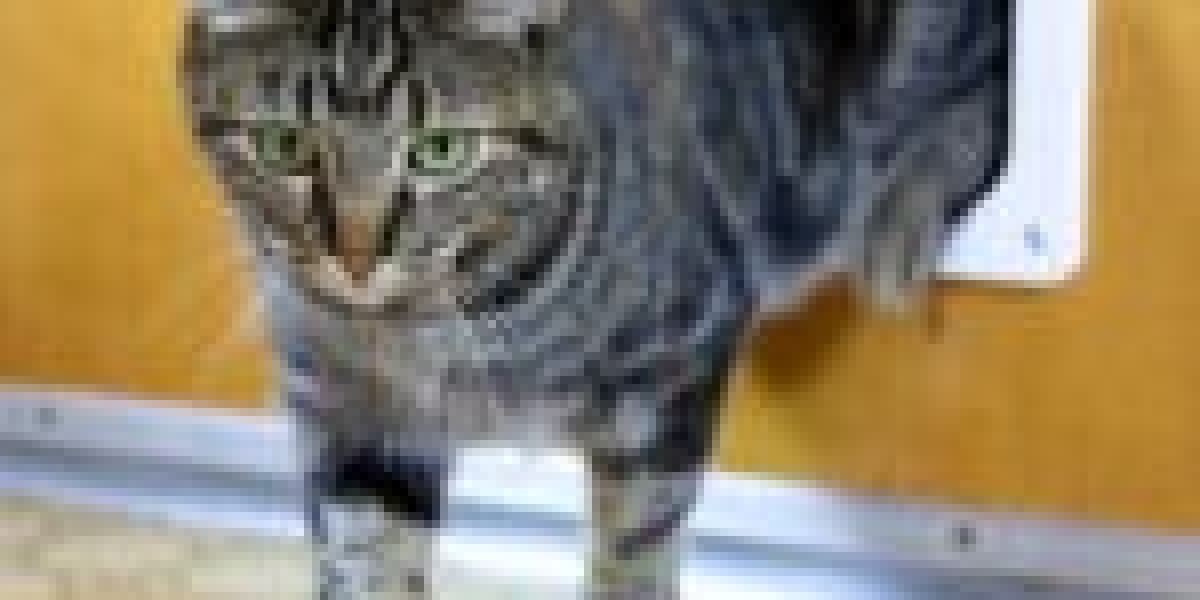The Ultimate Guide to Cat Flap Replacement: Why, When, and How

As a cat flap for glass door owner, it's vital to provide your feline buddy with a comfy and hassle-free way to get in and exit your home. A cat flap, likewise known as a cat door, is an easy and effective service that permits your cat to come and go as it pleases. Nevertheless, like any other household item, cat flaps can wear in time, needing replacement. In this short article, we'll check out the reasons that cat flap replacement is essential, the indications that show it's time for a brand-new one, and a detailed guide on how to change a cat flap.
Why Replace a Cat Flap?
There are a number of reasons cat flap replacement is needed:
- Wear and tear: Cat flaps go through consistent use, which can result in wear and tear on the hinges, seals, and other moving parts.
- Weather damage: Exposure to rain, snow, and extreme temperatures can trigger the cat flap to degrade, leading to water leaks and drafts.
- Bug control: Old or damaged cat flaps can provide an entry point for unwanted insects, such as rodents, cat Flap Fitter birds, or bugs.
- Energy efficiency: A brand-new cat flap can help in reducing heat loss and energy usage, making your home more energy-efficient.
- Enhanced security: Modern cat flaps typically include sophisticated security features, such as lockable doors and magnetic seals, to prevent unapproved entry.
Signs that Indicate it's Time for a New Cat Flap
If you observe any of the following signs, it's most likely that your cat flap requires to be replaced:
- Leaks and drafts: If you observe water or air leaking through the cat flap, it's time to think about a brand-new one.
- Difficulty opening or closing: If the cat flap ends up being stuck or difficult to open or close, it's likely that the hinges or seals are broken.
- Sound: If the cat flap makes excessive sound when opening or closing, it might be a sign that the moving parts are broken.
- Bug problem: If you see insects entering your home through the cat flap, it's time to replace it with a brand-new one.
How to Replace a Cat Flap: A Step-by-Step Guide
Changing a cat flap is a fairly basic DIY job that can be finished with standard tools and products. Here's a step-by-step guide:
Materials needed:
- A brand-new cat flap
- Screwdriver or drill
- Determining tape
- Pencil or marker
- Wood screws (if needed)
- Weatherstripping (if needed)
Instructions:
- Measure the existing cat flap: Measure the width and height of the existing cat flap to ensure that the new one fits completely.
- Get rid of the old cat flap: Use a screwdriver or drill to eliminate the screws holding the old cat flap in location. Gently pry the cat flap out of the door or wall.
- Clean the location: Clean the location around the old cat flap to get rid of any debris or dirt.
- Mark the position of the new cat flap: Use a pencil or marker to mark the position of the brand-new cat flap on the cat-friendly door installation or wall.
- Drill pilot holes: Drill pilot holes for the screws that will hold the brand-new cat flap in place.
- Set up the brand-new cat flap: Insert the brand-new cat flap into the pet emergency door installation or wall and screw it into location.
- Include weatherstripping (if necessary): Apply weatherstripping around the edges of the cat flap to avoid drafts and leaks.
Idea:
- Choose a cat flap that is appropriate for your cat's size and breed.
- Think about a cat flap with innovative security functions, such as lockable doors and magnetic seals.
- Use a level to ensure that the cat flap is installed straight and level.
- Test the cat flap before installing it to guarantee that it works efficiently and quietly.
Often Asked Questions:
- Q: How long does it require to replace a cat flap?A: The time it takes to replace a cat flap depends on the complexity of the task and the person's DIY skills. Usually, it takes about 30 minutes to an hour to complete the task.
- Q: Can I change a cat flap myself?A: Yes, replacing a cat flap is a reasonably easy DIY project that can be completed with basic tools and materials. However, if you're not comfortable with DIY tasks, it's advised to hire a professional.
- Q: How frequently should I change my cat door for patio door flap?A: The frequency of changing a cat flap depends on use and weather conditions. Typically, a cat flap should be replaced every 5-7 years.
- Q: What are the advantages of a new cat flap?A: A brand-new cat flap can enhance energy effectiveness, security, and convenience for your cat. It can likewise decrease sound and prevent pest problem.
Conclusion:
Replacing a cat flap is an easy and important task that can improve the comfort and convenience of your feline buddy. By following the detailed guide outlined in this post, you can quickly change your old cat flap with a brand-new one. Keep in mind to choose a cat flap that appropriates for your cat's size and breed, and consider sophisticated security features to prevent unapproved entry.
Additional Resources:
- Best Cat Flaps for Energy Efficiency: [link]
- How to Choose the Right Cat Flap: [link]
- Do It Yourself Cat Flap Installation Tips: [link]
By offering your cat flap with timer Installation with a comfy and practical way to go into and leave your home, you can improve its total health and joy. Remember to replace your cat flap every 5-7 years to ensure that it remains in excellent working condition.







